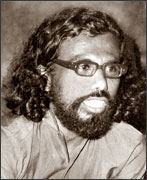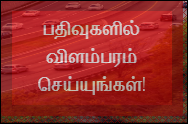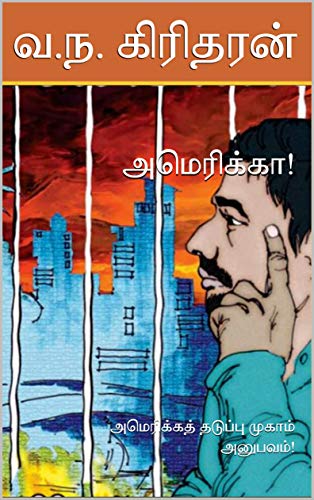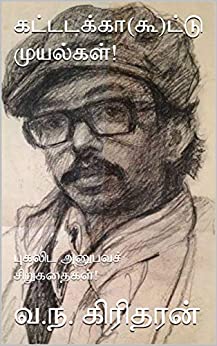Eyewitness account of how the JVP Leader was killed
 The Janata Vimukti Peramuna (JVP) was proscribed by the UNP government after the Black July of 1983. It was one of the classic examples of unethical political expediency of putting the blame for the riots on the JVP though the UNP itself was responsible for perpetrating violence on Tamil people in the south. JVP founder leader Rohana Wijeweera and other members went underground. An unprecedented spate of violence followed till 1988-89 at the instance of the JVP as well as the R.Premadasa UNP regime of the time. Rohana Wijeweera disguised as a proprietary planter lived at a tea plantation near Gampola under an alias “Aththanayaka” for a few years. On a tip off from a former JVP member he was arrested and brought to Colombo on the evening of November 13, 1989, without the media and the public being made aware of it. The secret operation was known only to the Deputy Defense Minister Ranajan Wijeratne and a few senior army officers and probably to the then President R.Premadasa. Wijeweera was shot in cold blood after his arrest and he was thrown into the crematorium chamber while he was still alive, but hardly conscious at the time and was cremated alive. Unknown to the senior and junior army officers there remained a single member of the JVP Indrananda Silva from Polonnaruwa who witnessed the crime and he related the tale to The Nation after all these years.
The Janata Vimukti Peramuna (JVP) was proscribed by the UNP government after the Black July of 1983. It was one of the classic examples of unethical political expediency of putting the blame for the riots on the JVP though the UNP itself was responsible for perpetrating violence on Tamil people in the south. JVP founder leader Rohana Wijeweera and other members went underground. An unprecedented spate of violence followed till 1988-89 at the instance of the JVP as well as the R.Premadasa UNP regime of the time. Rohana Wijeweera disguised as a proprietary planter lived at a tea plantation near Gampola under an alias “Aththanayaka” for a few years. On a tip off from a former JVP member he was arrested and brought to Colombo on the evening of November 13, 1989, without the media and the public being made aware of it. The secret operation was known only to the Deputy Defense Minister Ranajan Wijeratne and a few senior army officers and probably to the then President R.Premadasa. Wijeweera was shot in cold blood after his arrest and he was thrown into the crematorium chamber while he was still alive, but hardly conscious at the time and was cremated alive. Unknown to the senior and junior army officers there remained a single member of the JVP Indrananda Silva from Polonnaruwa who witnessed the crime and he related the tale to The Nation after all these years.
I had joined the military police during the late 1980s though I was attracted by the JVP as an unemployed youth who had sat my GCE Advanced Levels. My older brother was a university student who needed financial assistance to continue his studies and after I joined the army I had the fortune of becoming a photographer of the military police. I was attached to the military police headquarters camp Narahenpita.
It was a fateful day in my life – November 13 1989 – I was asleep on my bed in the billet when someone woke me holding a torch to my face. The face of the torch was covered with a tissue so that the others in the billet were not disturbed by the strong beam of torchlight. In the subdued light I saw the person who flashed the torchlight had three pips on his uniform lapels. He whispered to me to come out and put his finger on his lips to ask me to be silent.
Though the billet was out of bounds for Captain Abeynayake he had come in and then told me that I had to bring my camera and equipment for a very important assignment. I was scared as there were torture chambers in and around Colombo at the time where youth were brought in tortured and later killed. My duties included taking photographs of those unfortunate youth who were killed after they were photographed. Somehow this I felt was a very dangerous assignment as I had been questioned previously about how one of the photographs I had taken was found with an arrested JVP member. I evaded suspicion about being a JVP member saying that the padlock of the photography room was tampered with and opened.
It was during the small hours of that night, that I was first woken up for duty and asked to get into a waiting car. I took my camera bag and equipment and I also had a pistol but decided against taking it. It was a pistol I had got while I was a JVP activist, but I was keeping it hidden among my belongings even after I joined the military police. The car started and was going in the direction of Thimbirigasyaya and I knew there was the Operation Combine office near the color lights, a two storey building where there was also a conference room where all operations were discussed. Capt Abeynayake asked me whether I have a girlfriend but my reply was negative. He said he could not believe my reply but added that I should not divulge anything about this particular operation we were going for, even to a girlfriend.
Once we reached that office I went upstairs with the Captain and I saw a number of senior army officers seated chatting with a civilian I did not know. As I did not know the civilian I quietly asked Col Muthalifb who it was and he told me it was the JVP leader Rohana Wijeweera. It was difficult to identify him as he was not the person we had seen only in photographs and in person during the 1982 presidential election as a candidate. He was clean shaven and was fatter and darker.
I had to call him aside and take his photograph. I asked him to come to a side of the room and made eight photographs and while taking the photographs I asked him who he was. He told me he was Rohana Wijeweera. When I asked who Aththanayaka was he explained it was an alias he had used. He did not appear scared and was chatting with the officers quite normally. Wijeweera was explaining to the senior army officers how the Premadasa Government had supplied arms to the LTTE. He was talking very logically and the officers felt embarrassed at his explanation about the supply of arms to the terrorist group. Then Col Muthalifb said there was a deputy leader of the JVP downstairs and I should take some photographs of the man too. When I went to make the photographs of the man I saw it was H.B.Herath who had been tortured badly. He could not even stand up but I made four photographs with the greatest difficulty.
When we came upstairs again I heard the telephone ringing and someone said the call was from President Premadasa. Maj General Waidyarathne answered the call and he was seen talking to the President for about ten minutes while the other officers were still chatting with Wijeweera. After that they said they said they would take Wijeweera downstairs and they asked him to come down with them. Once we came down someone blindfolded Wijeweera and I believed he was going to be killed. One of the officers who had removed Wijeweera’s spectacles put it in his pocket and said “Wijeweera Mahattaya I have put your specs in your pocket.”
Rohana Wijeweera would have known that he was to be killed and he asked them why they blindfolded him and he told them whatever they did to him not to harm his family and children. Police officer Ronnie Gunasinghe appeared disturbed and he started looking at the palms of Wijeweera. Wijeweera asked him whether Gunasinghe was reading his palm to find out whether death was written on the palm. There were two jeeps parked downstairs and intuition told me that Wijeweera was to be killed.
In the meantime I was asked to go upstairs with my commanding officer Major Dassanayake, but when I asked him whether we were not accompanying the other officer he said we should go back to our camp. Major Gen Waidyarathne on hearing it started scolding Major Dassanayake in foul language. He said “You too will be killed like a dog if you don’t come.”
Finally when we got into the vehicle and left it was about half and hour later. Our destination was the Borella cemetery, Kanatte. When we arrived there we saw that Wijeweera was lying near the crematorium. He was shot in the chest and appeared to have been tortured. His blindfold had been removed. As we came there Major Gamini Hettiarachchi asked me not to make any photographs of Wijeweera and the officers including Maj Gen Jayasundara were discussing about putting Wijeweera into the crematorium. He was still alive and was groaning. Then the officer in charge of the crematorium was asked for the key of the crematorium but he refused to give the key. One of the army officers pointed his revolver to the forehead of the man and said he will be shot dead if he did not give the key. The man then handed over the key and the officers asked him the way to switch on the crematorium. Next the soldiers who were there were asked to throw Wijeweera into the crematorium. Two soldiers held him by his hands and legs and swung him to the crematorium but their aim was askew and he fell on a side. They held his hands and legs again and threw him into the crematorium. I heard him groaning even the second time. When he was put in to be cremated he was still alive. That was how the JVP leader was killed.
Courtesy: http://www.nation.lk/edition/news-features/item/13033-rohana-wijeweera-cremated-alive.html




